Mount Abu, the only hill station in the arid state of Rajasthan, is a green desert island in the middle of the desert. Located in Sirohi district, it sits at an elevation of 1,220 meters (4,003 ft) in the Aravalli Range. Known for its cool climate, lush greenery and historical significance, Mount Abu is a popular destination for tourists seeking respite from the heat and immersion in nature and culture.

Table of Contents
Historical significance
Mount Abu has a rich history with ancient mythology and association with Rajputan kingdoms. This is believed to be the place where sage Vashishta retired after his conflict with sage Vishwamitra. According to Hindu mythology, the city derives its name from ‘Arbuda’, the mighty serpent who saved the life of Nandi, Lord Shiva’s bull. The area has been a pilgrimage site for Hindus and Jains for centuries.
Main attractions
Guru Shikhar
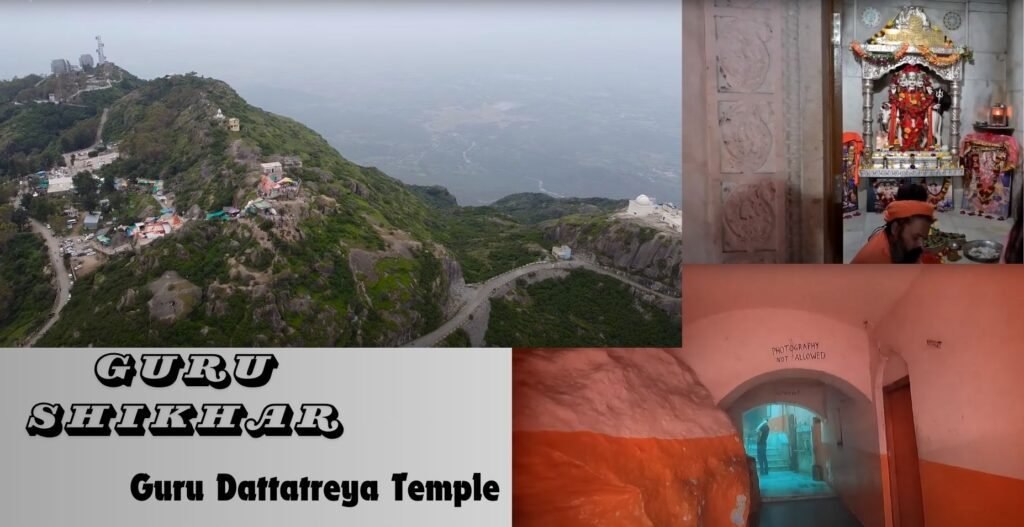
Observatory: The peak also houses the Mount Abu Observatory, which is used for space and planetary research.
Trekking: The trek to Guru Shikhar is relatively easy and can be enjoyed by people of all ages.
Highest Peak: Guru Shikhar is the highest peak in the Aravalli Range, standing at 1,722 meters (5,650 feet) above sea level.
Panoramic Views: The peak offers breathtaking panoramic views of the surrounding landscapes, making it a popular spot for photographers and nature lovers.
Guru Dattatreya Temple: At the summit is the Guru Dattatreya temple, dedicated to an incarnation of the Hindu Trinity (Brahma, Vishnu, and Shiva).
Jawai Lake
Scenic Beauty: Jawai Lake is known for its stunning natural beauty and serene environment.
Bird Watching: The lake is a haven for bird watchers, hosting a variety of migratory and resident birds, including flamingos and cranes.
Leopard Sighting: The area around Jawai Lake is famous for its leopard sightings, often seen lounging on the rocks near the water.
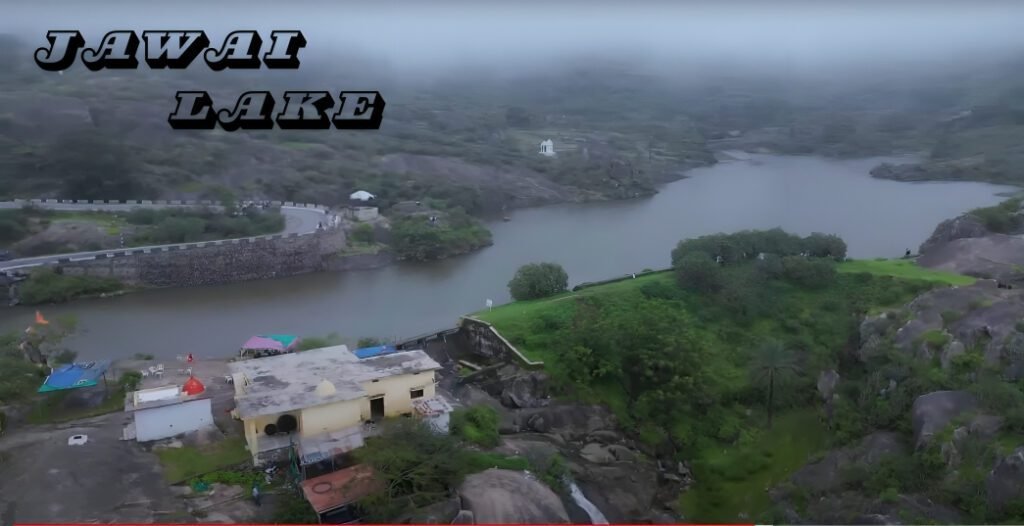
Boating: Visitors can enjoy a peaceful boat ride, taking in the tranquil surroundings.
Sunset Views: The lake is an ideal spot to witness mesmerizing sunsets over the water.
Shooting Point
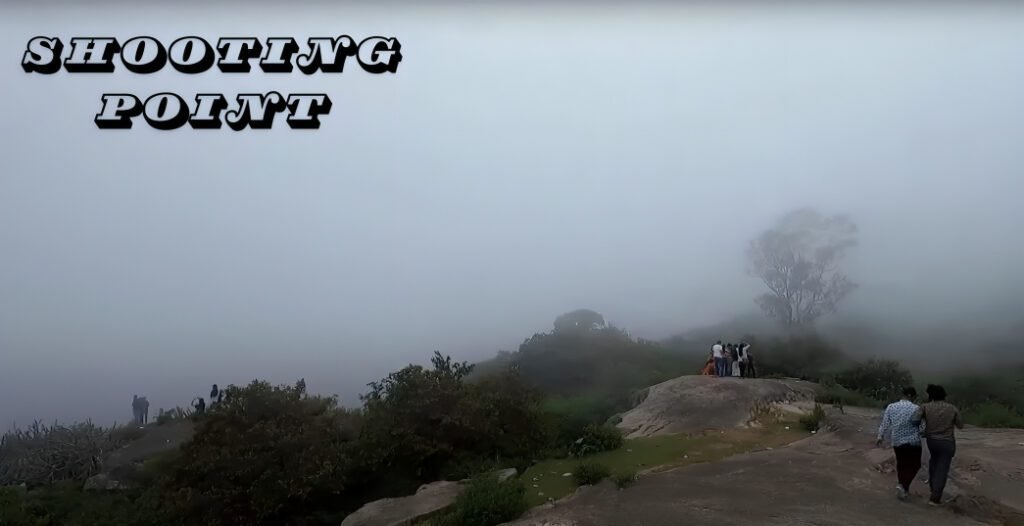
Hiking Trails: There are several hiking trails around the area for those looking to explore the natural landscape.
Sunset Views: Shooting Point is also a great place to watch the sunset, offering stunning vistas as the sun dips below the horizon.
Scenic Spot: Shooting Point offers a picturesque view of the surrounding hills and valleys, making it a favorite among photographers and nature enthusiasts.
Popular Filming Location: It is named Shooting Point because it has been a popular location for filming Bollywood movies.
Picnic Spot: The area is also a popular picnic spot where families and friends can relax and enjoy the scenic beauty.
Somnath Mahadev Temple
Ancient Temple: The Somnath Mahadev Temple is an ancient shrine dedicated to Lord Shiva.
Spiritual Significance: It is considered a significant religious site, attracting devotees from across the region.
Festivals: The temple is especially crowded during festivals like Mahashivratri, when special prayers and rituals are performed.
Architectural Beauty: The temple is known for its beautiful architecture and serene surroundings.
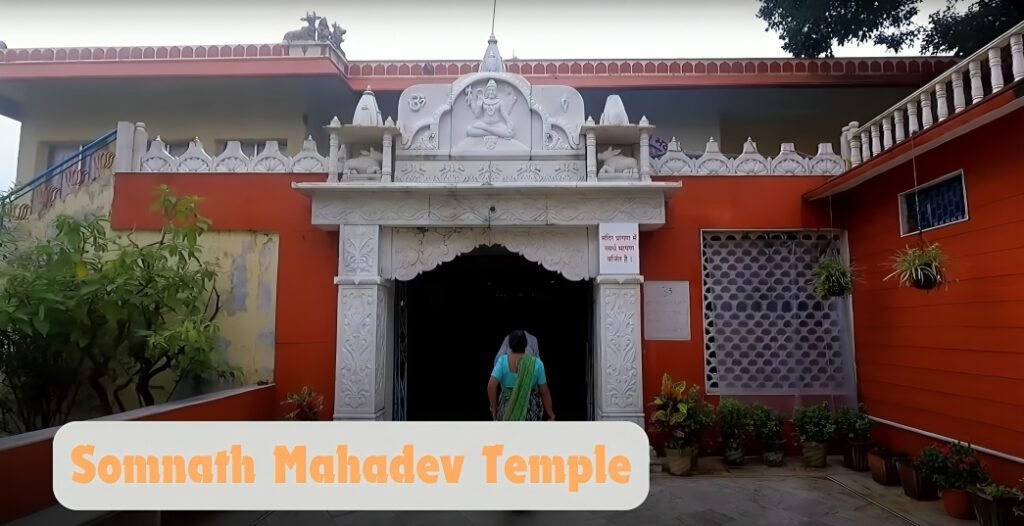
Sacred Pond: There is a sacred pond near the temple where devotees often take a dip before offering prayers.
Shree Shankar Math
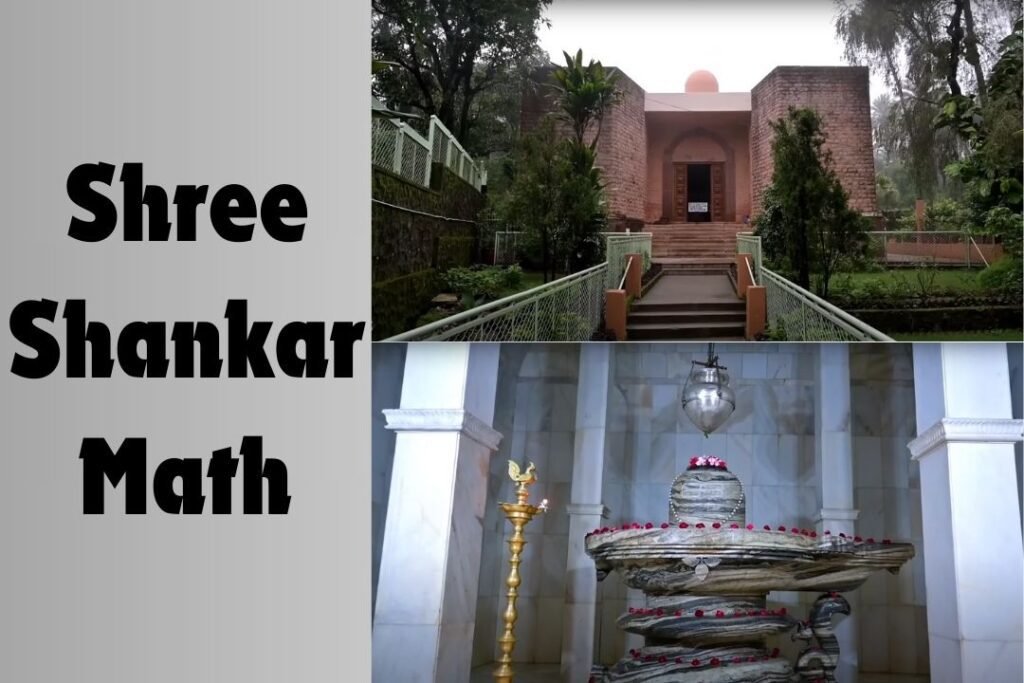
Lush Gardens: The math is surrounded by lush gardens, enhancing its serene and calming environment.
Spiritual Retreat: Shree Shankar Math is a peaceful spiritual retreat dedicated to the worship of Lord Shiva.
Serene Atmosphere: The math offers a tranquil atmosphere perfect for meditation and spiritual rejuvenation.
Cultural Programs: Various cultural and religious programs are conducted here, providing insights into Hindu traditions and rituals.
Architectural Marvel: The structure of the math is an architectural marvel, reflecting traditional Indian styles.
Mount Abu Wildlife Sanctuary
Biodiversity: Spanning about 288 square kilometers, the sanctuary is home to a diverse range of flora and fauna, including several endangered species.
Flora: The sanctuary houses a variety of plant species, including medicinal herbs and flowering plants.
Fauna: Visitors can spot animals like leopards, sloth bears, sambars, and jungle cats. It is also home to more than 250 bird species.
Trekking: The sanctuary offers several trekking trails for adventure enthusiasts, providing an opportunity to explore its rich biodiversity.
Conservation Efforts: The sanctuary is involved in various conservation efforts to protect its unique ecosystem.
Nakki Lake
Mythological Significance: According to Hindu mythology, the gods dug this lake using their nails (‘Nakki’) to protect themselves from the demon Banshkhali.
Boating: The lake offers boating facilities, allowing visitors to enjoy the calm waters and picturesque surroundings.
Scenic Walk: The lake is surrounded by a beautiful promenade that is perfect for a leisurely stroll.
Picnic: The area around the lake is ideal for a picnic, with green spaces and benches.
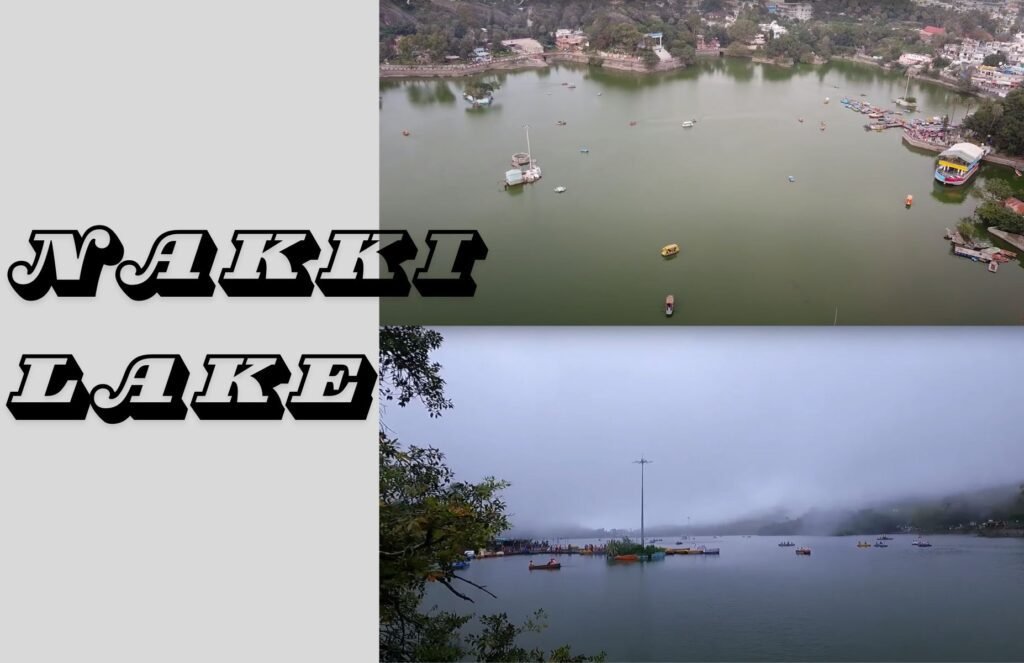
Nearby attractions: There are many attractions near Nakki Lake like Toad Rock, which looks like a frog.
Raghunath Temple
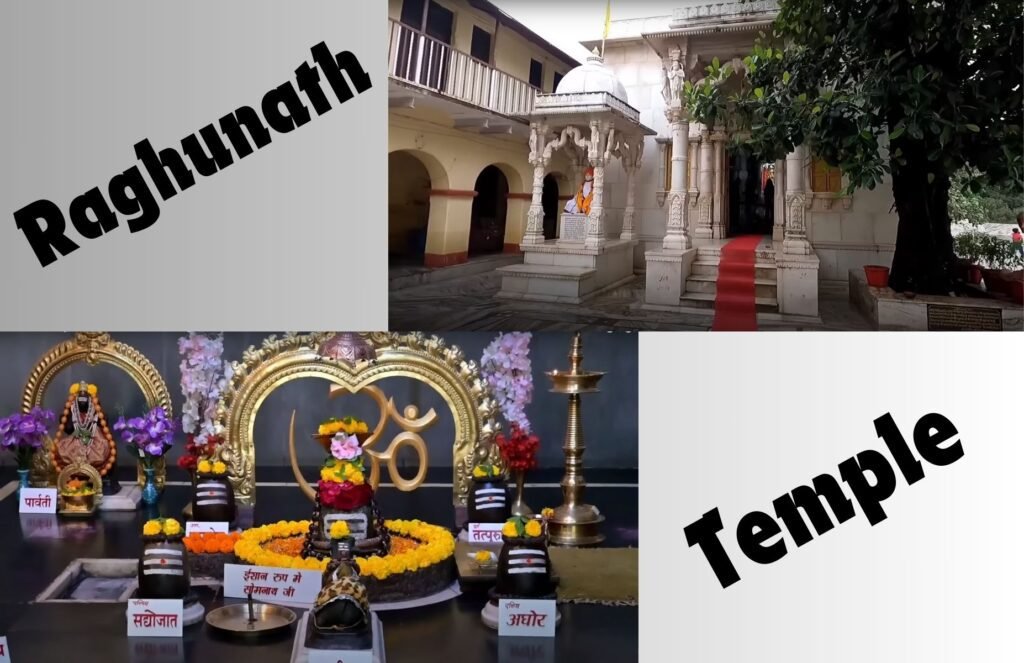
Peaceful Atmosphere: The temple offers a peaceful atmosphere, ideal for meditation and spiritual reflection.
Historical Temple: Raghunath Temple is an ancient temple dedicated to Lord Vishnu, located near the Nakku lake.
Architectural Beauty: The temple is known for its beautiful architecture and intricate carvings.
Spiritual Significance: It is considered an important religious site, attracting devotees from all over the region.
Festivals: The temple is especially vibrant during festivals like Ram Navami, where special prayers and rituals are performed.
Toad Rock
Unique Formation: Toad Rock is a huge rock formation that looks like a frog jumping into a pond.
Popular Photo Spot: It is a popular spot for photography, offering spectacular views of the lake and the surrounding hills.
Hiking: Visitors can hike to Toad Rock, which offers some adventure and exercise.
Viewing Point: From the top, there are excellent views of the Nakki lake and the surrounding landscape.
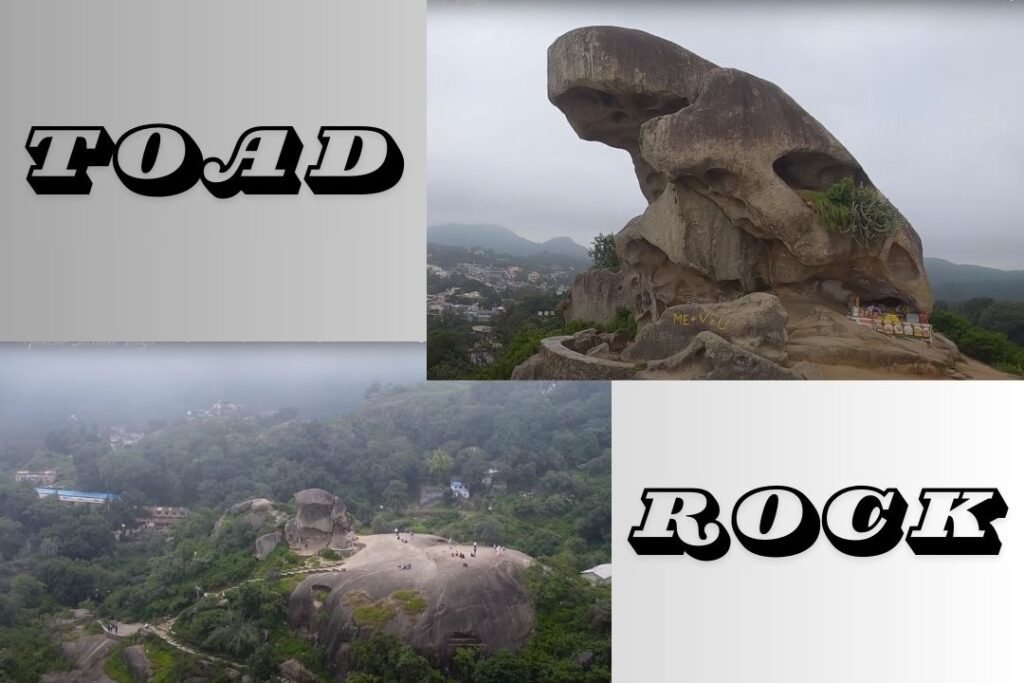
Geological Interest: Tod Rock is of geological interest due to its unique formation.
Honeymoon Point
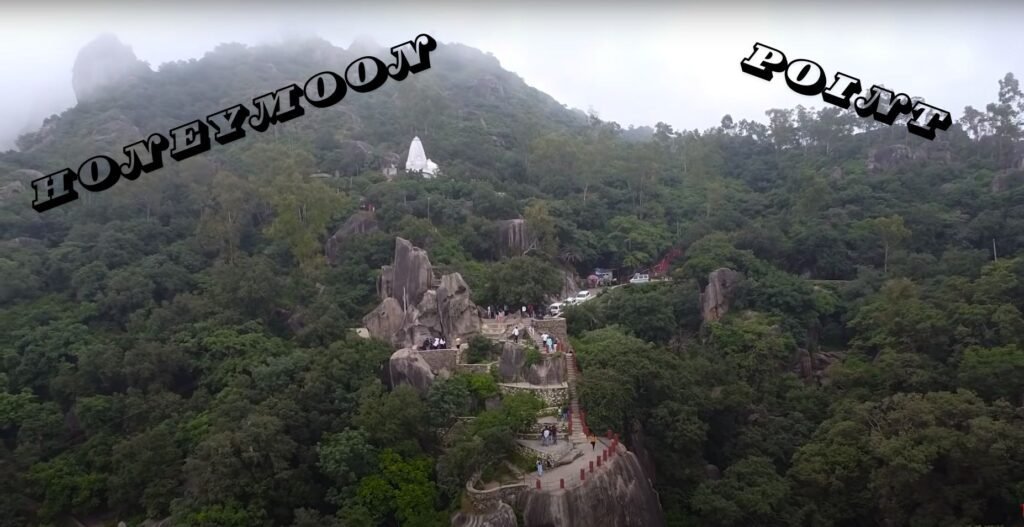
Hiking Trails: There are several trails leading to Honeymoon Point, which provide a pleasant hiking experience.
Nearby attractions: The point is close to other attractions like Sunset Point and offers equally stunning views.
Romantic Spot: Honeymoon Point offers a romantic setting with spectacular views, making it popular among couples.
Sunset Views: It is one of the best places in Mount Abu to watch the sunset, with the sun casting a golden glow on the hills.
Tranquil Ambience: This area is known for its calm and serene atmosphere, perfect for a quiet evening.
Brahma Kumari Ashram
Spiritual Headquarters: The Brahma Kumaris Ashram in Mount Abu is the spiritual headquarters of the Brahma Kumaris World Spiritual University.
Meditation Center: The ashram offers various courses and sessions on meditation and spiritual education.
Peaceful Environment: It provides a serene environment for spiritual retreat and personal growth.
Global influence: The ashram attracts visitors from all over the world, seeking spiritual guidance and peace.

Events and Programs: Regular events and programs are organized to promote values like peace, love and harmony.
Dilwara Temples
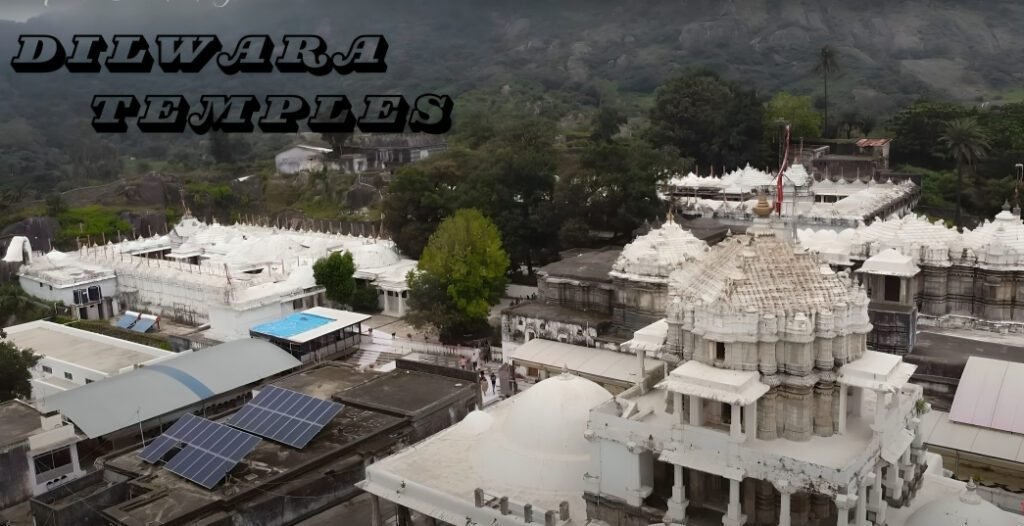
Architectural Marvel: The Dilwara temples are famous for their intricate marble carvings and architectural beauty, considered masterpieces of Jain architecture.
Historical Significance: These Jain temples date back to the 11th and 13th centuries and are considered masterpieces of Jain architecture.
Exquisite Carvings: Temples are famous for their detailed marble carvings, depicting various scenes from Jain mythology and daily life.
Pilgrimage: Dilwara temples are an important pilgrimage site for Jains, attracting devotees from all over the world.
Five Temples: The complex consists of five temples, each dedicated to a different Tirthankar and exhibiting unique artistic styles.
Temples:
Vimal Vasahi: The first Jain Tirthankara, dedicated to Rishabhanath, was built by Vimal Shah in 1031 AD.
Luna Vasahi: Built in 1230 AD by two Porwad brothers dedicated to the 22nd Tirthankar Neminath.
Pithalhar Temple: Contains a remarkable statue of the first Tirthankar made of brass (brass).
Parswanath Temple: Has intricate marble carvings and is dedicated to the 23rd Tirthankar.
Mahaveer Swamy Temple: The smallest temple, dedicated to Lord Mahaveer.
Mount Abu Market
Shopping Hub: Mount Abu Market is a bustling center for shopping, offering a variety of local products and souvenirs.
Local Handicrafts: Visitors can buy local handicrafts, textiles, jewelry and other traditional Rajasthani items.
Cultural Experience: A walk through the market gives a glimpse of the local culture and lifestyle.
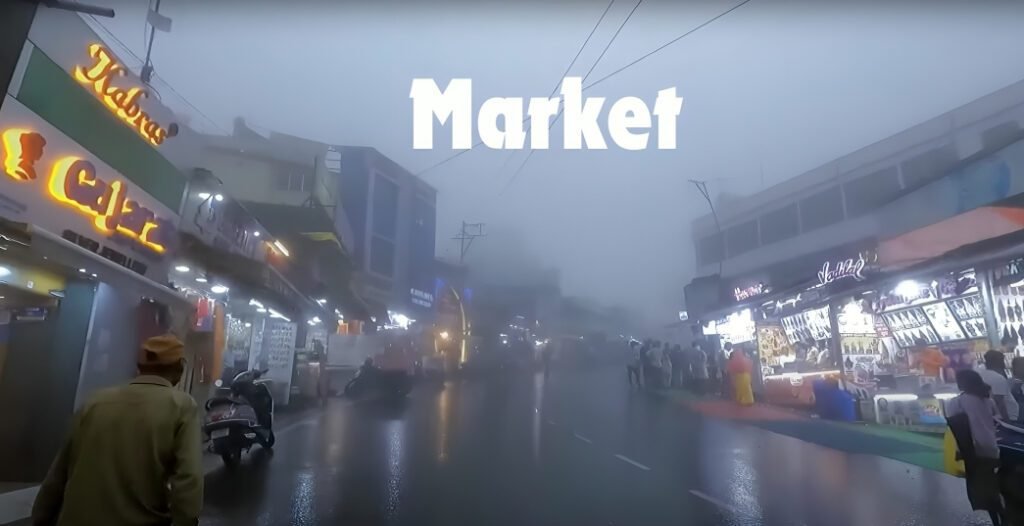
Achalgarh Fort
Historical Site: Originally built by the Parmar dynasty and later rebuilt by Maharana Kumbha in the 14th century.
Temples:
Achaleshwar Mahadev Temple: Dedicated to Lord Shiva, with Shiva’s thumb impression and a brass statue of Nandi.
Kantinath Jain Temple: An important place for Jain pilgrims.
Nearby Attractions
Abu Road
Gateway: The nearest railway station to Mount Abu, serving as the main entry point.
Attractions: Offers a glimpse of local Rajasthani culture and serves as a base for exploring the region. The town itself is quaint with local markets and eateries.
Ambaji Temple
Religious Site: Located about 45 km from Mount Abu, it is one of the 51 Shakti Peethas dedicated to Goddess Amba.
Festivals: Famous for its grand Navratri celebrations, attracting thousands of devotees from across the country.
Palanpur
Historical Town: Approximately 65 km from Mount Abu, known for its beautiful Jain temples and lush gardens.
Attractions: The Balaram Palace, a former hunting lodge turned luxury hotel, and several old havelis (traditional mansions).
Pindwara
Industrial Town: Around 45 km from Mount Abu, known for its marble and stone industry.
Attractions: Provides insight into the local crafts and industries of Rajasthan, with tours available of marble factories.
Culinary Delights in Mount Abu
Mount Abu, Rajasthan’s only hill station, not only captivates visitors with its natural beauty and historical significance but also offers a delectable array of culinary delights. Here’s a guide to the must-try dishes and the best places to enjoy them in Mount Abu.
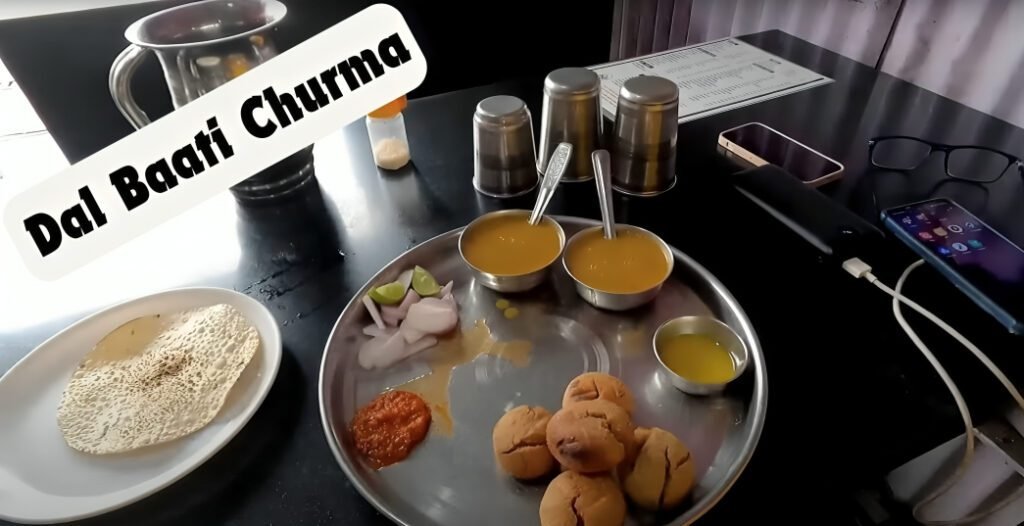
Must-Try Dishes
Dal Baati Churma: A traditional Rajasthani dish consisting of baked wheat balls (baati), served with a spiced lentil curry (dal), and a sweet mixture of crushed wheat and jaggery (churma).
You can find this dish at many local restaurants and dhabas, but Jodhpur Bhojanalaya and Mulberry Tree Restaurant are highly recommended.
Gatte ki Sabzi: This dish features gram flour dumplings cooked in a spicy yogurt-based curry.
Rajasthani Thali: A wholesome platter that includes a variety of Rajasthani dishes such as dal baati churma, gatte ki sabzi, ker sangri, bajra roti, and more.
Rabri: A traditional Rajasthani dessert made from thickened milk, flavored with cardamom, saffron, and topped with nuts.
Chacha’s Café and Shree Ganesh Restaurant are popular spots for enjoying this sweet treat.
Ker Sangri: A unique dish made from dried beans and berries, cooked with traditional Rajasthani spices.
Malpua: Sweet pancakes made from flour and milk, deep-fried and soaked in sugar syrup, often served with rabri.
Ghevar: A honeycomb-like dessert made from flour, soaked in sugar syrup, and often garnished with nuts and rabri.
Shree Ganesh Restaurant and Mulberry Tree Restaurant are known for their delicious ghevar.
Street Food and Snacks
Pav Bhaji: Spicy mashed vegetable curry served with buttered bread rolls.
Kachori: A deep-fried snack filled with spiced lentils or onions.
Pani Puri: Hollow puris are filled with spicy and tangy flavored water.
Chaat: A savory snack made with crisp fried dough, boiled potatoes, chickpeas, and tamarind chutney.
Samosa: A deep-fried pastry filled with spiced potatoes and peas.
How to Reach Mount Abu
By Air
Nearest Airport: The nearest airport to Mount Abu is Maharana Pratap Airport (Dabok Airport) in Udaipur, approximately 165 km away.
Alternative Airports: Other nearby airports include Sardar Vallabhbhai Patel International Airport in Ahmedabad (about 221 km away) and Jodhpur Airport (about 326 km away).
Transfers: From these airports, you can hire a taxi or take a bus to reach Mount Abu. Many hotels also offer airport pick-up services upon request.
By Train
Nearest Railway Station: The nearest railway station is Abu Road Railway Station, located about 28 km from Mount Abu.
Major Trains: Several important trains connect Abu Road with major cities like Delhi, Mumbai, Ahmedabad, Jaipur, and Jodhpur. Key trains include:
Ashram Express (Delhi to Abu Road)
Aravali Express (Mumbai to Abu Road)
Suryanagari Express (Jodhpur to Abu Road)
Ahmedabad Mail (Ahmedabad to Abu Road)
Transfers: From Abu Road Railway Station, you can take a taxi, bus, or even shared jeeps to reach Mount Abu. The journey takes about 45 minutes to 1 hour.
By Road
Bus Services: Mount Abu is well-connected by state-run and private buses from major cities in Rajasthan and neighboring states. Regular bus services are available from Udaipur, Jaipur, Ahmedabad, Jodhpur, and Delhi.
Rajasthan State Road Transport Corporation (RSRTC): Operates regular and deluxe buses to Mount Abu.
Private Buses: Numerous private operators offer comfortable and luxury bus services to Mount Abu.
Driving: If you prefer to drive, Mount Abu is accessible via well-maintained roads.
From Udaipur Approximately 165 km via NH27.
From Ahmedabad Approximately 221 km via NH48 and Abu Road.
From Jaipur Approximately 493 km via NH48.
Local Transportation in Mount Abu
Taxis and Autos: Once you are in Mount Abu, you can easily get around by hiring local taxis or auto-rickshaws.
Bikes and Scooters: Rental services for bikes and scooters are also available for those who prefer exploring at their own pace.
Walking: Many of Mount Abu’s attractions are close to each other, making it a pleasant place for walking and hiking.
Travel Tips and Advice
Best Time to Visit
Winter (November to February): This is the best time to visit Mount Abu as the weather is cool and pleasant, ideal for sightseeing and outdoor activities.
Summer (April to June): Summers are warm but still bearable compared to the plains. It’s a good time to escape the heat and enjoy the cooler climate of Mount Abu.
Monsoon (July to September): The region receives moderate to heavy rainfall, making the landscape lush and green. However, some activities might be restricted due to rain.
Accommodation
Book in Advance: During peak tourist seasons, it’s advisable to book your accommodation in advance to get the best deals and avoid last-minute hassles.
Types of Accommodation: Mount Abu offers a range of accommodations, from luxury hotels and resorts to budget guesthouses and homestays.
Packing Essentials
Clothing: Carry light woolens for the winter months and light, breathable clothes for the summer. If visiting during the monsoon, pack rain coat or umbrella and waterproof footwear.
Footwear: Comfortable walking shoes are essential for exploring the various attractions and hiking trails
Sunscreen and Sunglasses: The sun can be quite strong, even in the hills, so protect your skin and eyes.
Medication and First Aid: Carry any necessary medication and a basic first aid kit.
Camera: Capture those moments to make your journey memorable and remember forever.
Health and Safety
Stay Hydrated: Carry a water bottle and stay hydrated, especially if you’re doing a lot of walking or hiking.
Altitude Sickness: While Mount Abu isn’t extremely high, some people might still feel the effects of the altitude. Take it easy and acclimate.
Personal Safety: Mount Abu is generally safe, but it’s always good to stay alert and take usual precautions, especially when traveling alone or at night.
Sightseeing Tips
Plan Your Itinerary: Make a list of must-see attractions like Dilwara Temples, Nakki Lake, Guru Shikhar, and more. Allow enough time to fully enjoy each site.
Early Start: Start your day early to avoid crowds and make the most of the daylight hours.
Respect Local Customs: When visiting temples and other religious sites, dress modestly and follow any specific rules or customs.
Food and Dining
Local Cuisine: Don’t miss out on trying local Rajasthani dishes like dal baati churma, gatte ki sabzi, and traditional sweets like ghevar and rabri.
Hygiene: Choose clean and reputed eateries to avoid any food-related illnesses. Street food can be delicious, but ensure it’s from a hygienic vendor.
Water: Drink bottled or filtered water to avoid any stomach issues.
Responsible Tourism
Keep It Clean: Dispose of your waste properly and avoid littering, especially in natural and historical sites. Because I have seen in many places the filth that is not called good human behavior.
Eco-Friendly Practices: Try to minimize your environmental impact by using reusable bottles and bags, and opting for eco-friendly transportation options.
Connectivity
Mobile Network: Mount Abu has good mobile network coverage, but it’s always good to check with your service provider.
Internet: Most hotels and guesthouses offer Wi-Fi, but the speed and reliability might vary. Carry a portable hotspot if you need consistent internet access.
Conclusion
Mount Abu, offers a unique blend of natural beauty, cultural richness, and spiritual tranquility. Nestled in the Aravalli Range, this charming destination is a haven for travelers seeking a serene escape from the hustle and bustle of city life. Mount Abu is a destination that offers something for every traveller. Whether you’re a nature enthusiast, a history buff, a foodie, or a spiritual seeker, this hill station has it all. Its unique charm lies in its ability to seamlessly blend natural beauty, rich culture, and spiritual serenity. With its welcoming atmosphere and diverse attractions, Mount Abu promises an unforgettable travel experience.

Frequently Asked Questions (FAQs)
What is Mount Abu known for?
Mount Abu is known for its stunning natural beauty, including lush green hills, serene lakes, and diverse wildlife. It is also famous for its historical and cultural sites like the Dilwara Temples, Nakki Lake, and the spiritual Brahma Kumaris Ashram.
When to visit Mount Abu?
The best time to visit Mount Abu is during the winter months from November to February when the weather is cool and captivating. Summers (April to June) are also bearable compared to the plains, and the monsoon season (July to September) makes the landscape lush and green.
How can I reach Mount Abu by air?
The nearest airport to Mount Abu is Maharana Pratap Airport in Udaipur, about 165 kilometers away. Alternative airports include Sardar Vallabhbhai Patel International Airport in Ahmedabad (221 kilometers) and Jodhpur Airport (326 kilometers). From these airports, you can hire a taxi or take a bus to Mount Abu.
Is there any railway station in Mount Abu?
The nearest railway station is Abu Road station, which is about 28 km from Mount Abu. It is well connected to major cities like Delhi, Mumbai, Ahmedabad, Jaipur and Jodhpur. From the station, you can take a taxi or bus to reach Mount Abu.
Are there direct buses to Mount Abu?
Yes, there are direct buses operated by the Rajasthan State Road Transport Corporation (RSRTC) and various private operators from cities like Udaipur, Jaipur, Ahmedabad, Jodhpur, and Delhi.
What types of accommodation are available in Mount Abu?
Mount Abu offers a range of accommodation including luxury resorts, mid-range hotels, budget guesthouses and homestays. It will be beneficial for you to book in advance during the peak tourist season.
Are there any budget accommodations in Mount Abu?
Yes, there are several budget-friendly guesthouses and hostels available in Mount Abu, catering to travelers looking for economical options.
What are the must-visit attractions in Mount Abu?
Key attractions include Dilwara Temples, Nakki Lake, Guru Shikhar, Mount Abu Wildlife Sanctuary, Raghunath Temple, Brahma Kumaris Ashram, Toad Rock, and Honeymoon Point.
Can we enjoy boating in Mount Abu?
Yes, boating is a popular activity at Nakki Lake, offering a tranquil and scenic experience.
What are some popular trekking routes in Mount Abu?
Popular trekking routes include trails to Guru Shikhar, Trevor’s Tank, and the Mount Abu Wildlife Sanctuary. These treks offer stunning views and a chance to explore the natural beauty of the area.
What local dishes should I try in Mount Abu?
Must-try local dishes include Dal Baati Churma, Gatte ki Sabzi, Rajasthani Thali, Ker Sangri, Malpua, Rabri, and Ghevar. Street food like Pav Bhaji, Kachori, and Pani Puri are also popular.
Where can I find good local food in Mount Abu?
Some recommended places include Jodhpur Bhojanalaya, Arbuda Restaurant, Mulberry Tree Restaurant, Swagat Restaurant, King’s Food, Chacha’s Café, Jaipur Palace, and Shree Ganesh Restaurant.
How can I get around Mount Abu?
Local transport options include taxis, auto-rickshaws and bike or scooter rentals. Walking is also a distinct pleasure to explore the town and nearby attractions.

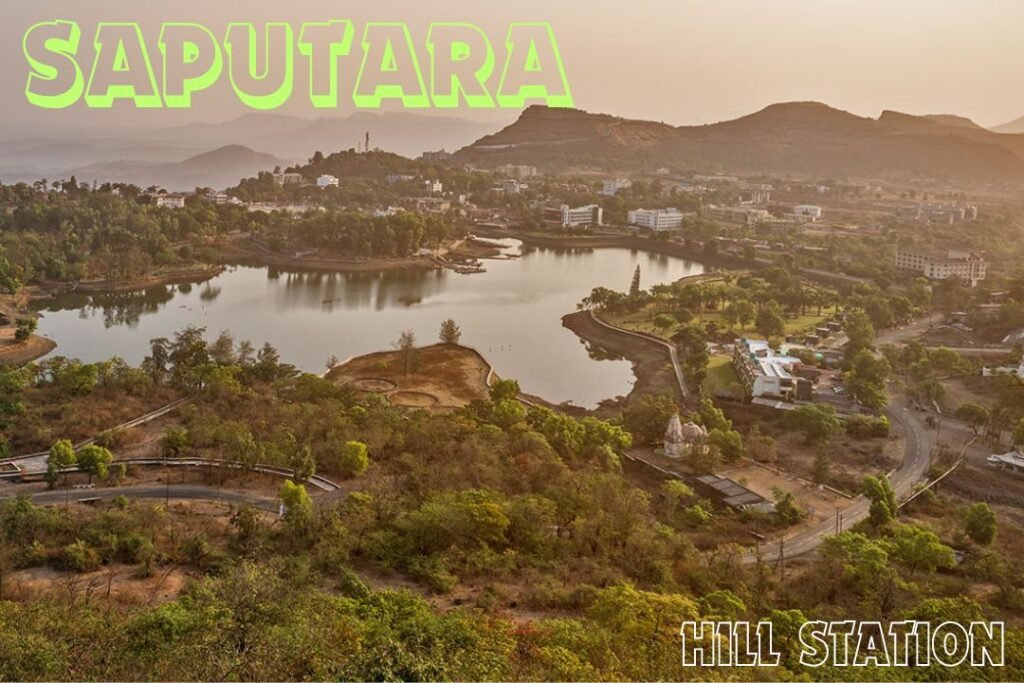
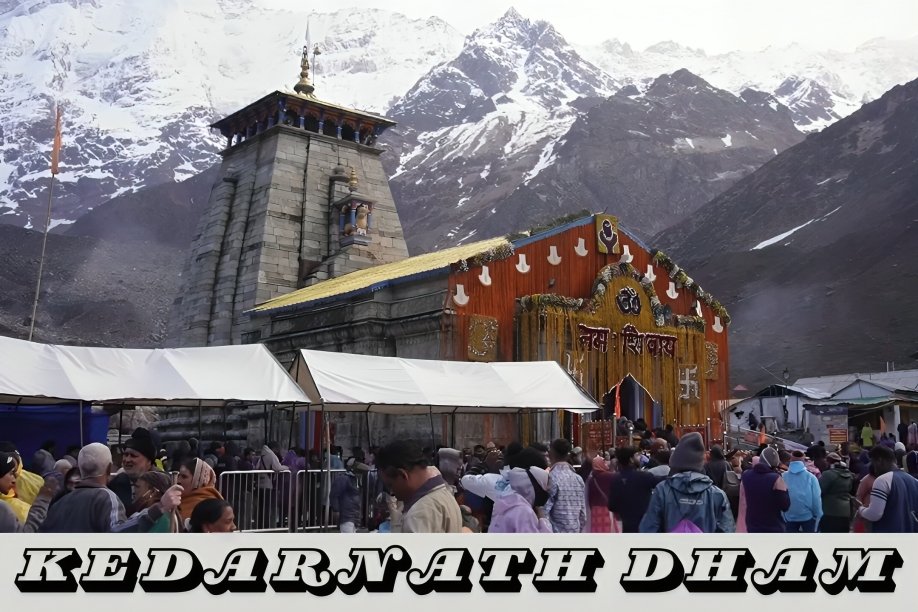
Pingback: Mandu: Explore the Timeless Beauty of India's Ancient Treasure - GujjuTraveling
Pingback: Ellora Caves: The Ultimate Guide of 8 Hidden Gems - GujjuTraveling
Pingback: Saputara: The only Hill station in Gujarat